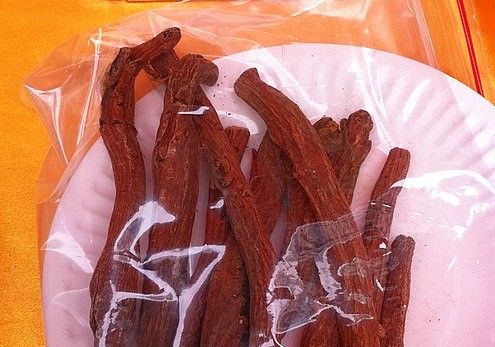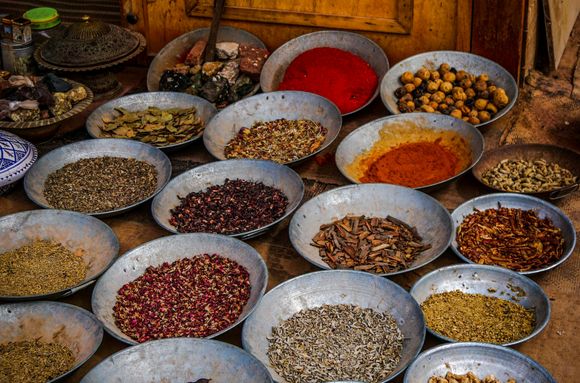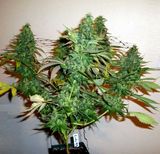Adaptation of the text: Rositsa Tashkova, Master of Molecular Biology and Microbiology
We are mostly used to looking for immunostimulating action in herbs, but there are at least two groups of people who need immunosuppression: those suffering from autoimmune diseases and those who have undergone transplantation.
The most common autoimmune diseases are multiple sclerosis, rheumatoid arthritis, psoriasis and psoriatic arthritis, Hashimoto's thyroiditis, Graves' disease, Crohn's disease and ulcerative colitis, lupus, type 1diabetes, vitiligo, alopecia areata.
This article is based on a 2012 publication. (Herbal Medicines for Immunosuppression, authored by Zahra Amirghofran, ref.1),which examines herbs having immunosuppressive and anti-inflammatory effects and may have a protective effect in immune-mediated diseases.
Due to the severe side effects of the most commonly used medications (glucocorticoids and cyclophosphamides), increasing attention has been paid in recent years to substances of plant origin that could replace them.
Turmeric (Curcuma longa)
Turmeric is derived from tropical South Asia and very often finds application in folk medicine for the treatment of infections and inflammatory diseases.
The main biological effects of turmeric are attributed to the substance curcumin - natural polyphenol with strong anti-inflammatory and antioxidant action. Curcumin can alter the expression of various transcription factors, cell cycle proteins and kinases - important components of cell life.
It has been found that the substance has an influence on lymphocytes and on a series of immunological functions, including humoral and cellular immunity; it also reduces the production of cytokines. [ref.2]
Several clinical studies have shown that curcumin may have potential as a therapeutic agent in inflammatory bowel diseases, pancreatitis, arthritis, and chronic anterior uveitis. [ref.3]

Thunder god vine, Lei gong teng (Tripterygium wilfordii Hook F)
The plant is bushy and is from the Spindle tree family. It is found in China, Japan, and Korea. The root is mainly used, as the other parts of the plant are very poisonous.
Lei gong teng is used to treat rheumatoid arthritis and systemic lupus erythematosus. The importance of plant derivatives has been demonstrated by both laboratory and clinical data. [ref.4]
The immunosuppressive activity of the herb can also be used in patients with organ transplantation. Hope for this gives a study of its effects in an animal model of kidney transplantation - the substancedemethylzeilasteral (T-96), isolated from this plant, in combination with prednisone has significantly prolonged the survival of rats with transplanted kidneys [ref.5].
Licorice (Glycyrrhiza sp.)
Herb licorice (liquorice) is used in folk medicine because of its antibacterial, immunomodulatory, cardioprotective, and hepatoprotective action.
Positive effects have been observed with the use of substances from the plant in psoriasis in combination with milk proteins in the composition of cream [ref.6].
Read more in the article
The root of licorice contains glycyrrhizin, the main metabolite of which is glycyrrhizin acid, which has also shown anti-inflammatory effects in various animal models of diseases.
Danshen (Salvia miltiorrhiza)
The other names of the herb are red sage, Chinese sage, and tan shen. It is very common in China where it is used to treat hepatitis, brain, and heart disease.

The plant inhibits the production of gamma-interferon from lymph node cells and can find application in the treatment of immunological diseases.
The main active substance of danschen is Tanshione IIA (TSN). It reduces the levels of inflammatory cytokines interleukin-2 (IL-2), interleukin-4 (IL-4), gamma-interferon (IFN-γ), and tumor-necrotizing factor-alpha (TNF-α), but increases those of the anti-inflammatory cytokine interleukin-10 (IL-10).
Green tea (Camelliasinensis)
Green tea finds many applications in folk medicine - a painkiller, cardiotonic, carminative (gaseous action), central nervous system stimulant, diuretic, and against difficult digestion.
Polyphenol compounds in green tea have anti-inflammatory properties, and in various experiments, with animal models, they have demonstrated an immunosuppressive effect.
Green tea has alleviated autoimmune symptoms in an animal model of rheumatoid arthritis and in a mouse model of Sjogren's syndrome, and in recent years attention has turned to the substance epigallocatechin-3-gallate (EGCG) - a component of green tea with anti-inflammatory and immunomodulatory action. [ref.7]
Read more in the article .
Feverfew (Tanacetum parthenium)
Feverfew, also called Tanacetum, originates in the Balkan Mountains, but today it is distributed in many places around the world.
In folk medicine, it is used in rheumatoid arthritis and fever.
The herb inhibits some inflammatory enzymes and inhibits the excretion of inflammatory mediators nitric oxide, prostaglandin E2 and TNF-α from macrophages, as well as gamma-interferon and interleukin-4 from mononuclear cells in peripheral blood. [ref.8]
It is believed that bioactive compounds in the maiden door can be used as an additional agent in immunotherapy of colorectal cancer.

Barberry (Berberidaceae)
Pickled milk thistle has a long history in traditional medicine.
Berbamin is a purified compound from common barberry (Berberis vulgaris) and other types of barberry. It has strong anti-inflammatory properties and prolongs the life of mice after skin transplantation.
Details about the mechanisms of action of these herbs read in the original article [ref.1 - will download the article in PDF].
Other plants
Other plants have also demonstrated immunosuppressive action in various studies. These include:
- Garlic (Allium sativum);
- Astragalus (Astragalus membranaceus);
- Green chiretta (Andrographis paniculata);
- Sickle-leaved hare's-ear (Bupleurum falcatum);
- Yuan zhi (Polygala tenuifolia);
- Clerodendron trichotomum;
- Artemisia vestita;
- Salvia mirzayanii;
- Dracocephalum kotschyi;
- Zizyphus lotus;
- Stachys obtusicrena;
- Haussknechtia elymatica;
- Periploca sepium.
Read more in the article .
Future studies will confirm the place of these and other herbs in the therapy of autoimmune diseases and for maintaining the quality of life of transplanted patients.
Q&A
What causes autoimmune disease?
Scientists do not yet know the exact causes of autoimmune disease, but suggest that the process may be triggered by a viral or bacterial infection, under the influence of certain drugs, toxic substances or genetic predisposition. These factors can confuse the immune system and make it begin to recognize its own cells as hostile.
What are the symotoms of autoimmune disease?
There are over 80 autoimmune diseases or conditions. Despite the different types of autoimmune diseases, many of them have similar symptoms. Common symptoms of autoimmune disease include:
- Fatigue,
- Pain and swelling in the joints,
- Skin problems,
- Abdominal pain or problems with digestion,
- Recurrent fever,
- Swollen glands.
What type of transplantations are there?
Autotransplantation - with tissue, taken from the same patient that it would be transplanted to.
Allograft and allotransplantation - transplantation of tissue or organ from one person to another - the most common case of transplantation.
Xenograft and xenotransplantation - transplantation of a tissue or organ from one species to another, for example from an animal to a human.
Domino transplants - an example of such a case are patients with cystic fibrosis (a type of lung disease), but a healthy heart; in transplantation, it is easier to transplant both the lung and heart from a deceased donor and for the recipient to give their heart to another patient in need of a heart transplant.
ABO-incompatible transplants - usually in young children up to 12-24 months of age, while the immune system is not yet fully developed and the risk of rejecting an otherwise incompatible transplant is much lower.









